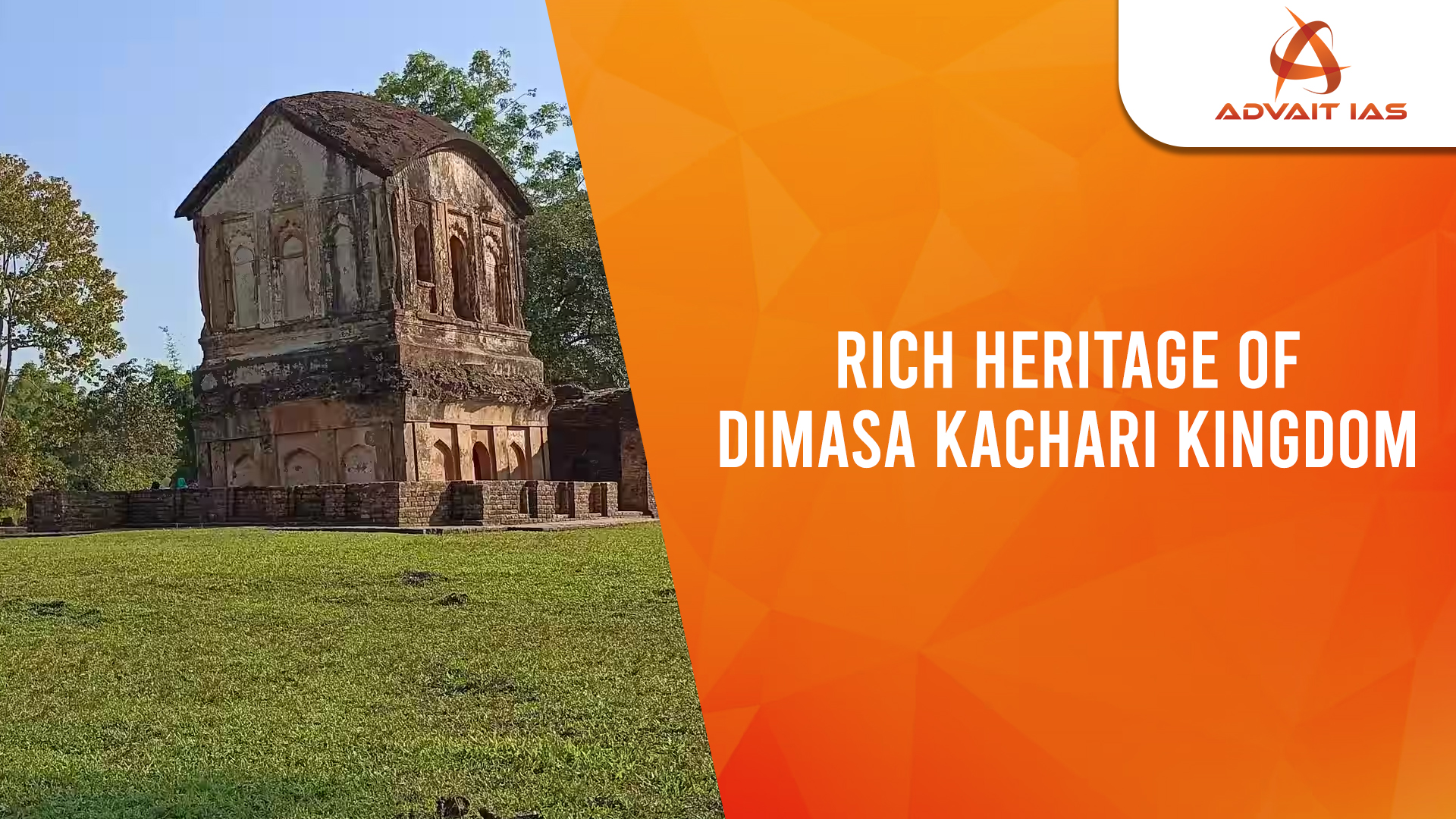In a groundbreaking archaeological effort, the Department of Archaeology under the Dima Hasao Autonomous Council (DHAC) has conducted an extensive survey of the Langting-Dhansiri valley in Dima Hasao district. This initiative has led to the discovery of significant archaeological remnants that shed light on the cultural, military, and technological advancements of the Dimasa Kachari kingdom.
Dimasa Kachari Kingdom
- Historical Significance: Also known as Kachari Hidimba or Timisa Kingdom, it was a major medieval and early modern kingdom in Assam.
- Rulers & Titles: Ruled by Dimasa kings, called Timisa in Ahom texts; later under Hindu influence, rulers adopted divine origins and Hindu names.
- Territorial Extent: Covered parts of Assam, Nagaland, Tripura, and Arunachal Pradesh; eastern boundary extended up to Mohong/Namchang.
- Capitals: Initially Dimapur, later moved to Maibang, and finally to Khaspur after merging with the Koch kingdom.
- Conflict & Expansion:
- Engaged in conflicts with Ahoms, Jaintias, and Koch kingdoms.
- Ahoms invaded and destroyed Dimapur in 1536, leading to the shift to Maibang.
- Became a tributary to the Koch Kingdom under Chilarai in the 16th century.
- Lost territories to Ahoms in the 17th century, ultimately retreating to Khaspur.
- Administration & Society:
- Governed by a council of ministers (Patra & Bhandari) under the king.
- Mel (Royal Assembly) was a powerful institution electing kings.
- 40+ Sengphong clans, each with a role in governance and state duties.
- Adopted Hindu influences, replacing Kechai Khaiti (war goddess) with Ranachandi as the titular deity.
- Relations with China: Believed to have had political ties with the Ming dynasty.
- Religious & Cultural Influence:
- Strong ties to Bodo-Kachari traditions, similarities with Chutiya and Moran cultures.
- War goddess Kechai Khaiti worshipped across Kachari tribes.
- Mushroom-domed Kachari ruins in Dimapur indicate early architectural advancements.
- British Annexation:
- Plains annexed in 1832, hills in 1834 after the death of Govinda Chandra Hasnu.
- Doctrine of Lapse led to complete British control, forming Cachar district.
Key Archaeological Discoveries
The exploration covered four key sites between Dima Hajong and Sonapur village in the Wajao MAC constituency. Among the notable findings are:
1. Circular Moat in Sonapur Village
A massive circular moat, approximately 120 meters in diameter, has been unearthed atop a hill in Sonapur village.
Locally known as ‘Korgai,’ this structure, measuring 16 feet wide and 14 feet deep, is believed to have served a dual purpose:
- Defensive Mechanism: Protecting the settlement from external threats.
- Elephant Trapping System: The moat’s depth and strategic design suggest its possible use in capturing elephants. Additionally, pottery shards, primarily red and black ware, were discovered, indicating human settlement and daily life activities.
2. Pit Trenches for Animal Capture
A strategically aligned 15-foot-deep pit trench was discovered along a hill slope at a 30-degree angle. These trenches were likely used for capturing wild animals, particularly elephants.
Their design incorporated natural hill slopes and surrounding cliffs, showcasing advanced engineering and an understanding of animal behaviour.
The funnel-like mechanism of the trenches highlights the ingenuity of the Dimasa people in utilizing their natural surroundings.
3. Workshop Site at Watidisa Dikhong
A third significant site, located on the streambed of Watidisa Dikhong, a tributary of the Dhansiri River, appears to have functioned as a manufacturing hub. The site contains intricately carved sandstone objects, including:
- Cannonballs and Sling Balls: Indicating a military production facility.
- Traditional Item Replicas: Some artifacts were fully finished, while others were in different stages of production, pointing to an active and ongoing manufacturing process. The Kachari ‘Buranji’ historical records mention the use of cannons by the Dimasa kingdom, corroborating the site’s significance as a weapon production center.
Historical and Cultural Significance
The findings align with oral traditions of the Dimasa people, which recount the relocation of the Dimasa monarch from Dimapur to the Langting-Dhansiri valley after a battle with the Ahom kingdom in 1536 CE.
The valley, situated strategically between Dimapur and Maibang, served as a crucial settlement and resource hub.
These discoveries offer tangible evidence of the Dimasa kingdom’s expertise in:
- Animal Capture Techniques
- Stone Carving and Manufacturing
- Military Organization and Defense Strategies This highlights their adaptability and resilience amid geopolitical challenges, emphasizing the region’s historical importance as a center of innovation and industry.
These efforts will further enrich our understanding of the Dimasa Kachari kingdom and its historical contributions.






